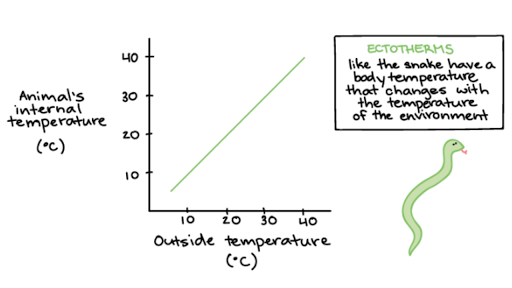how does temperature affect oxygen production
Excessively high or low ambient temperature Ta may affect sleep even in healthy humans without insomnia. On hot days the temperature is higher.

Transport Of Oxygen In The Blood Biology For Majors Ii
The process is used for industrial or domestic purposes to manage waste or to produce fuels.

. Bioreactors are widely used to cultivate cells during the development and manufacturing of modern biopharmaceuticals. 23-DPG undergoes metabolism in banked donor blood causing reduced oxygen unloading capacity after transfusion. Temperature governs the kinds of organisms that can live in rivers and lakes. Some of the more important variables that need to be controlled include temperature and the levels of blood sugar oxygen and carbon dioxide.
Temperature can alter the amount of oxygen needed for respiration and the amount of energy used. It is the most important. Of course CO2 is NOT the only GHG and as temperature increases so does the water vapour which acts as a positive feedback amplification. If a high temperature is present the yeast will die and no cellular respiration will take place.
The extra moisture in the soil decrease oxygen levels as there is less space for oxygen bubbles. Increased 23-DPG production is seen in anaemia which may minimize tissue hypoxia by right-shifting the ODC and increasing tissue oxygen release. Temperature d The presence of amylase in the saliva breaks starch to maltose. Inevitably this alone will affect the net heat balance of the Earth.
Lungs Respiration is the process by which glucose is used to create energy. As temperatures get too far above or below this preferred range the number of. Fish insects zooplankton phytoplankton and other aquatic species all have a preferred temperature range. Anaerobic digestion is a sequence of processes by which microorganisms break down biodegradable material in the absence of oxygen.
A number of organs are involved in homeostasis and these include the lungs pancreas kidneys and skin. Amylase as a biological catalystenzyme. These findings indicate that maintaining a comfortable thermal sleep. Much of the fermentation used industrially to produce food and drink products as well as home fermentation uses anaerobic digestion.
The oxygen sensor will produce a small electrical current that is proportional to level of oxygen it is reacting with. 7 factors that affect oxygen transfer to cells in bioreactors. Concentration c Milk turns sour faster on hot days than on cold days. This is due to increase in the concentration of oxygenair.
So the rate of burning increases. So the rate of the milk turns sour is higher. The source of the excess CO2 is explained by the shifting. This impedes the respiration in the roots which leads to the build-up of Carbon Dioxide methane.
Thermoregulation is the ability of an organism to keep its body temperature within certain boundaries even when the surrounding temperature is very different. The cellular respiration rate in yeast can be affected by temperature. But while water vapour is a stronger GHG than CO2 it does not remain in the atmosphere for long. Bioreactor cell cultivation importance of aeration and ways to control kLa.
An oxygen analyzer contains an oxygen sensor which reacts with the oxygen in the atmosphere or gas stream. Temperature exerts a major influence on biological activity and growth. Yeast is a living organism therefore optimal temperature is needed for activation of energy production. The internal thermoregulation process is.
The oxygen analyzer converts the current to a ppm or percent oxygen level which is then displayed on the oxygen analyzers screen or used to activate. Furthermore disturbed nocturnal sleep affects not only daytime activities but is also related to various adverse health effects such as obesity quality of life and even mortality 34. A thermoconforming organism by contrast simply adopts the surrounding temperature as its own body temperature thus avoiding the need for internal thermoregulation. Cells are very sensitive to changes in the culture environmental conditions such as aeration agitation.
Inorganic phosphate is a substrate for the production of 23-DPG and thus capillary haemoglobin oxygen release may.

Endotherms Ectotherms Article Ecology Khan Academy

How Temperature Influences Solubility Chemistry For Non Majors

Increasing Temperature Decreases The Affinity Of Hemoglobin For Oxygen Ie Increases The P50 Value Increasing Acidity Or Ph Does T Bohr Effect Biology Mcat

Effect Of Temperature On The Rate Of Photosynthesis Biology Notes For Igcse 2014

Lesson Info Photosynthesis Lab Gizmo Explorelearning Photosynthesis Lab Photosynthesis Life Science
Posting Komentar untuk "how does temperature affect oxygen production"